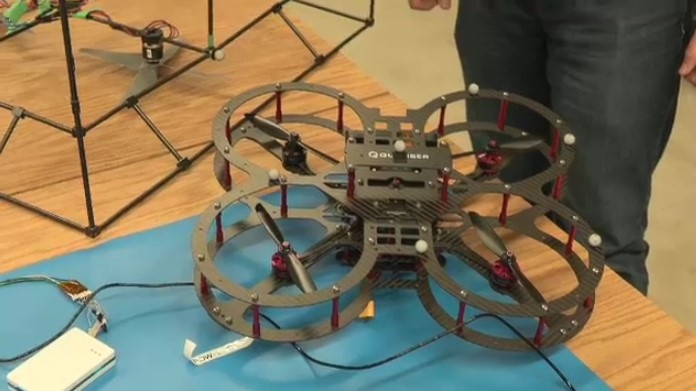The University of Manitoba is making strides in improving connectivity in the Arctic with the development of drone airships.
The project, led by the university’s Centre for Earth Observation Science (CEOS), aims to provide better internet and communication services to remote communities in the Arctic region.
The use of drone airships is a unique approach to addressing the challenges of connectivity in the Arctic. These airships, also known as aerostats, are large, unmanned balloons that can be equipped with various technologies to provide internet and communication services.
The team at CEOS is currently working on developing a prototype of the drone airship, which will be able to fly at high altitudes for extended periods of time. This is crucial in the Arctic, where extreme weather conditions and long distances make it difficult to maintain traditional communication infrastructure.
The drone airships will be equipped with solar panels, allowing them to operate for extended periods without the need for refueling. They will also be equipped with advanced communication technologies, such as satellite links and high-speed internet, to provide reliable connectivity to remote communities.
The project has received funding from the Canadian Space Agency and the Natural Sciences and Engineering Research Council of Canada. The team at CEOS is also collaborating with industry partners to ensure the success of the project.
The potential benefits of this project are significant. Improved connectivity in the Arctic will not only provide better internet and communication services to remote communities, but it will also have a positive impact on economic development, education, and healthcare in the region.
The drone airships will also play a crucial role in monitoring and studying the Arctic environment. They will be equipped with sensors and cameras to collect data on sea ice, weather patterns, and wildlife, providing valuable information for research and environmental management.
The project is also focused on training and engaging Indigenous communities in the development and operation of the drone airships. This will not only provide job opportunities but also ensure that the project is culturally sensitive and respects the traditional knowledge of the Arctic communities.
The team at CEOS is excited about the potential of this project and the impact it could have on the Arctic region. They hope to have a working prototype of the drone airship by the end of 2021 and plan to conduct test flights in the Arctic in the near future.
The development of drone airships for improved connectivity in the Arctic is a testament to the innovative and collaborative spirit of the University of Manitoba. This project has the potential to make a significant difference in the lives of those living in remote Arctic communities and contribute to our understanding of this unique and important region.




